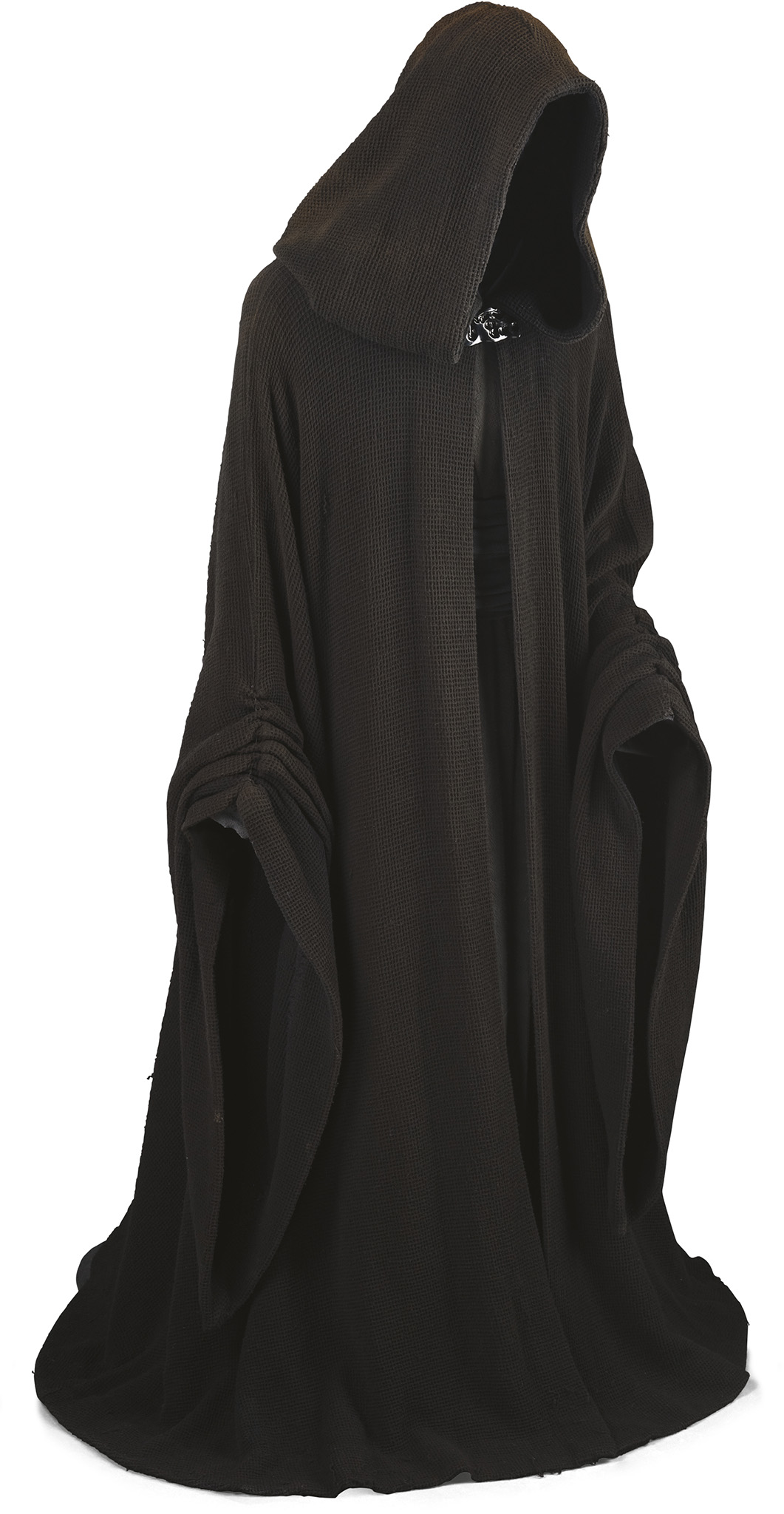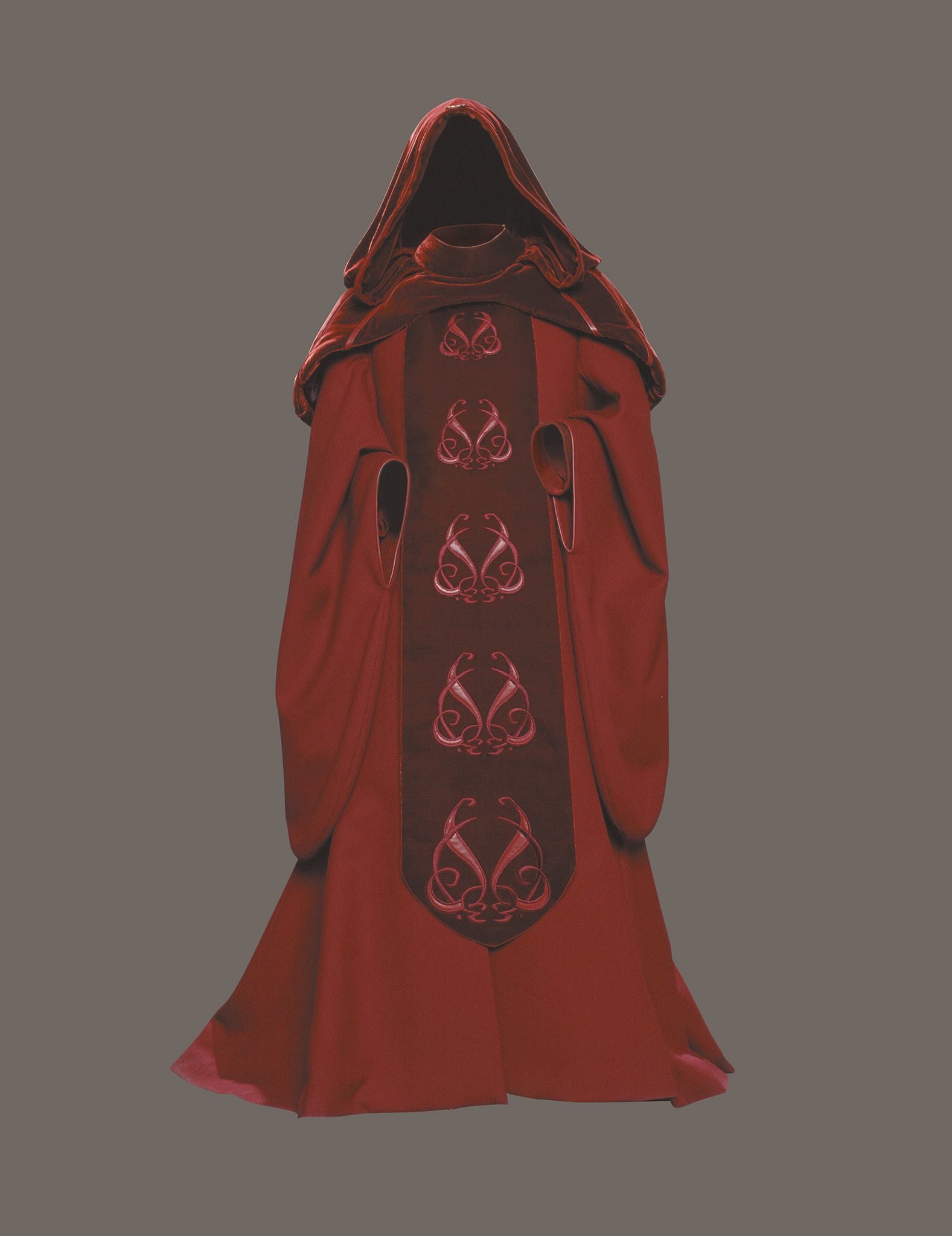g Imperial Era g Contents
25
Palpatine’s Robes
Location: Coruscant
Data: 19 BBY
Empire Day. For devotees of the Imperial regime, a cause for celebration. For those who mourned the loss of the Republic’s democratic ways, it was a day that would live in infamy.
Sheev Palpatine has gone by many names and titles through the ages. He could appear benign and unassuming while manipulating those around him to achieve his towering ambitions. In the political arena, Palpatine rapidly rose from being the senator representing Naboo to the Supreme Chancellor of the Galactic Republic. Acting under the guise of his Sith Lord persona, Darth Sidious, he orchestrated the outbreak of the Clone Wars, pushing the galaxy to the breaking point. He deliberately fostered conflict and turmoil to achieve his master plan. For it was only by creating chaos that Palpatine could emerge as the savior of the galaxy, a ruler answering to no one.
Pitting the Republic against the Separatists, Sidious secretly controlled Count Dooku and the sprawling droid army. Meanwhile, in public, Palpatine organized the Republic’s clone army, designating the Jedi as the generals who would lead individual legions on the frontlines. Then, after three long years of conflict, Palpatine used the growing wave of public distrust in the sect—once respected as galactic peacekeepers—to paint them as warmongers, hungry for power.
On the first-ever Empire Day, Palpatine delivered an impassioned decree that would mark the last gasp of the Republic. His speech rang out from the chambers of the Galactic Senate across the galaxy via holonet. Palpatine’s appearance was as startling as his words. Exhibiting a flair for the dramatic, Palpatine had replaced his usual ceremonial garb for a relatively simple blood-red robe with a velvet cowl. Beneath the hood, onlookers stared spellbound at their leader’s distorted face, warped almost beyond recognition after a near-fatal battle with the Jedi. Healthy human flesh had been replaced by a web of ghostly white scar tissue. His eyes were now sunken into the creased flesh. Rimmed in red, their formerly blue irises had turned a blazing, sickly yellow.
Always one to find an advantageous outcome in almost any situation, Palpatine used his pitiful-looking injuries as evidence of his own narrative that the Jedi Order had rebelled against the Republic they had once sworn to protect. The only possible punishment to fit this appalling act of treason was death. However, Palpatine’s speech that day was not a plea for help or sympathy from the populace. It was a victorious rallying cry. “The Jedi rebellion has been foiled,” he declared. “In order to ensure security and continuing stability, the Republic will be reorganized into the first Galactic Empire, for a safe and secure society.”
With this simple pronouncement—and the secret execution of Order 66 that saw the clone troopers turn against their Jedi leaders—the Clone Wars came to an end. The Republic was dissolved, and in its place Palpatine took his seat as the Emperor of a new age. With the Jedi all but exterminated, Palpatine continued to hide his Sith affiliation, emerging as the figurehead of what many hoped would be a peaceful new era of prosperity. Palpatine fed the public’s hunger for protection, employing what remained of his enigmatic smile as he selflessly vowed to lead the Empire and its people. “The attempt on my life has left me scarred and deformed,” he admitted, “but I assure you, my resolve has never been stronger.”
However, before long, Palpatine’s true character emerged as his intentions became inceasingly apparent. Seated on the throne of the Empire, he adopted the black robes of the Sith. He also chose to base himself in the Jedi Temple on Coruscant.
Looking back, as historians trace the events that led to Empire Day, Palpatine’s attire seems to suggest a descent into, if not madness, an oblique way of thinking. The people of Naboo are known for their fashion sense, and his status as a politician on Coruscant dictated that he follow certain decorum and formal dress while representing his homeworld. However, after being named Supreme Chancellor and being granted emergency powers at a crucial moment of crisis—the outbreak of the Clone Wars—Palpatine’s wardrobe became more eccentric. By the last phase of the galactic conflict, he had adopted darker and more somber vestments.

As his secret Sith persona Darth Sidious, Palpatine wore these black robes to conceal his identity. After the fall of the Jedi Order, Palpatine no longer hid in the shadows, donning the cloak in public without fully announcing his position as a Sith Master.
On the holonet, some saw Palpatine’s garments as a symbol of his empathy. They assumed that his choice of crimson and burgundy fabrics was a deliberate reminder to the public that he carried the weight of the war’s bloodshed on his conscience and mourned those lost in combat. It is likely that Palpatine’s choice of attire was more accurately a reflection of his bleak outlook. It was the clothing of a dictator figuratively bathing in the blood of those killed in turmoil he had created himself. He was effectively reveling in the atrocities committed in the name of the Republic and keenly aware that, regardless of the outcome of the war, he alone would emerge victorious.
As the years passed, even those once eager to buy into his grandiose promises began to see the fissures forming in the bedrock of his government. It became clear to all but his most fervent followers that his Imperial regime was a system created and controlled by Palpatine himself in order to facilitate his own quest for ultimate power.

While serving as Supreme Chancellor, Palpatine’s unfettered power during the Clone Wars all but made the Galactic Senate obsolete. An homage to his homeworld of Naboo, he wore this burgundy ensemble at the end of the conflict.
